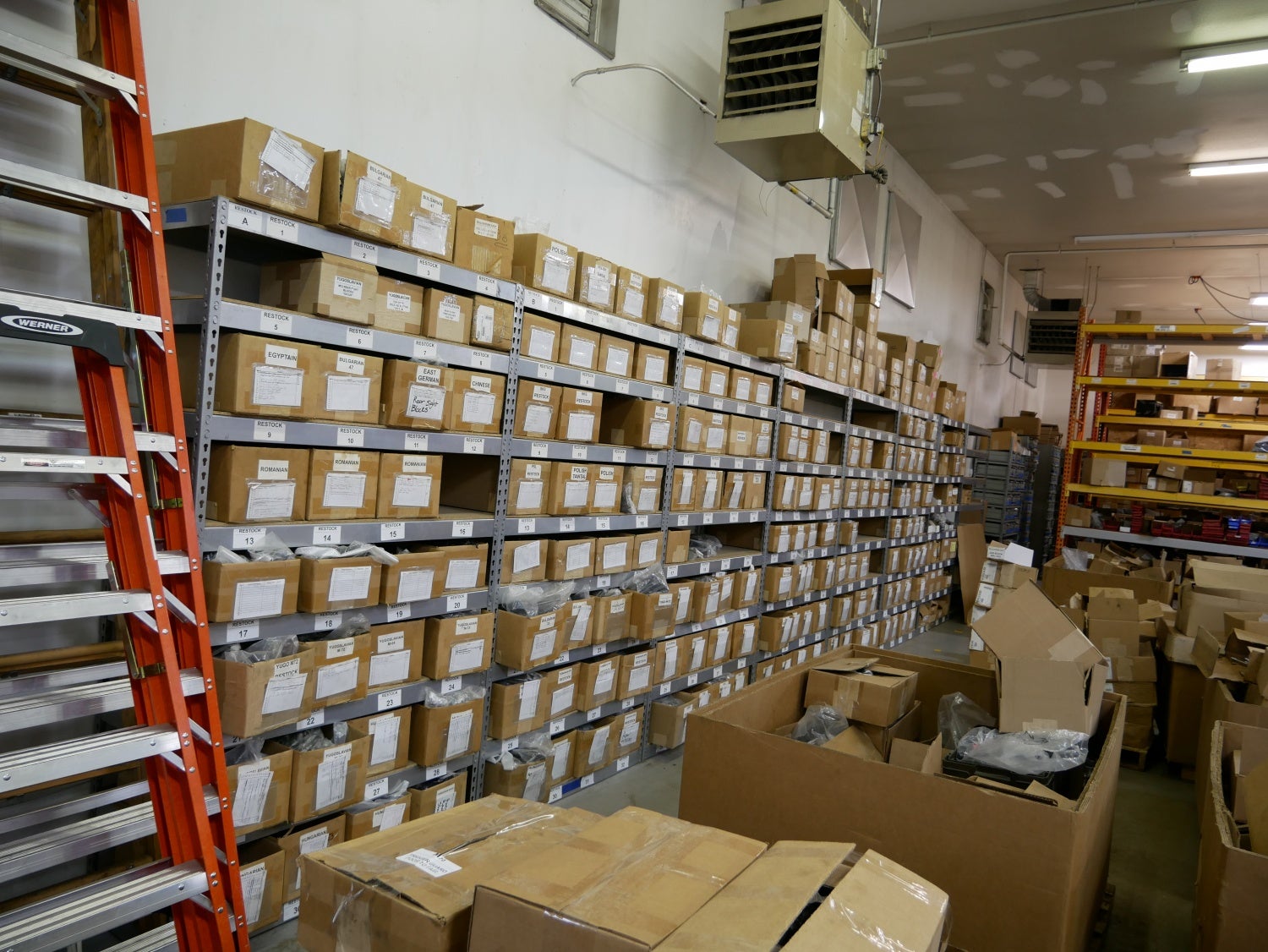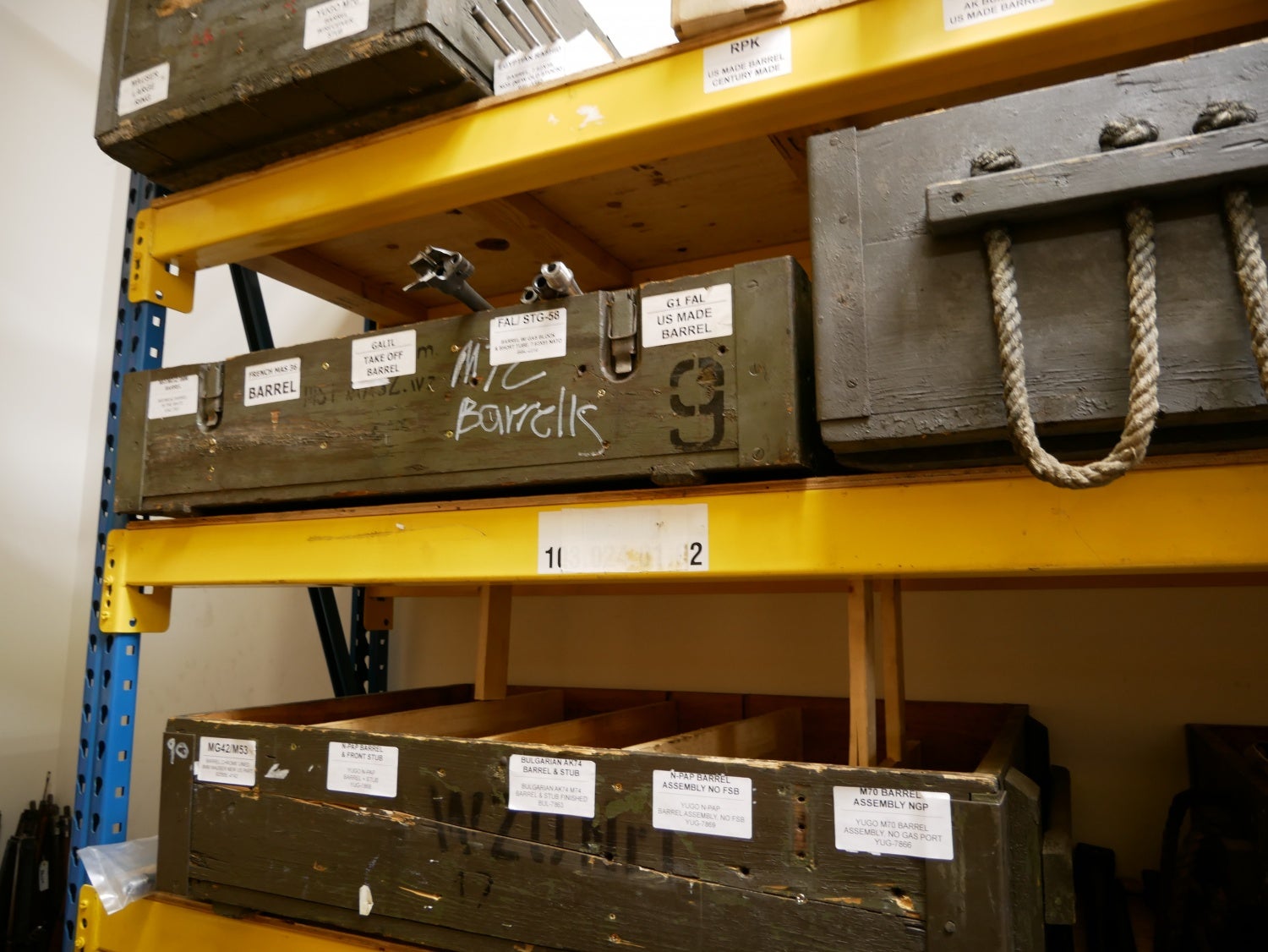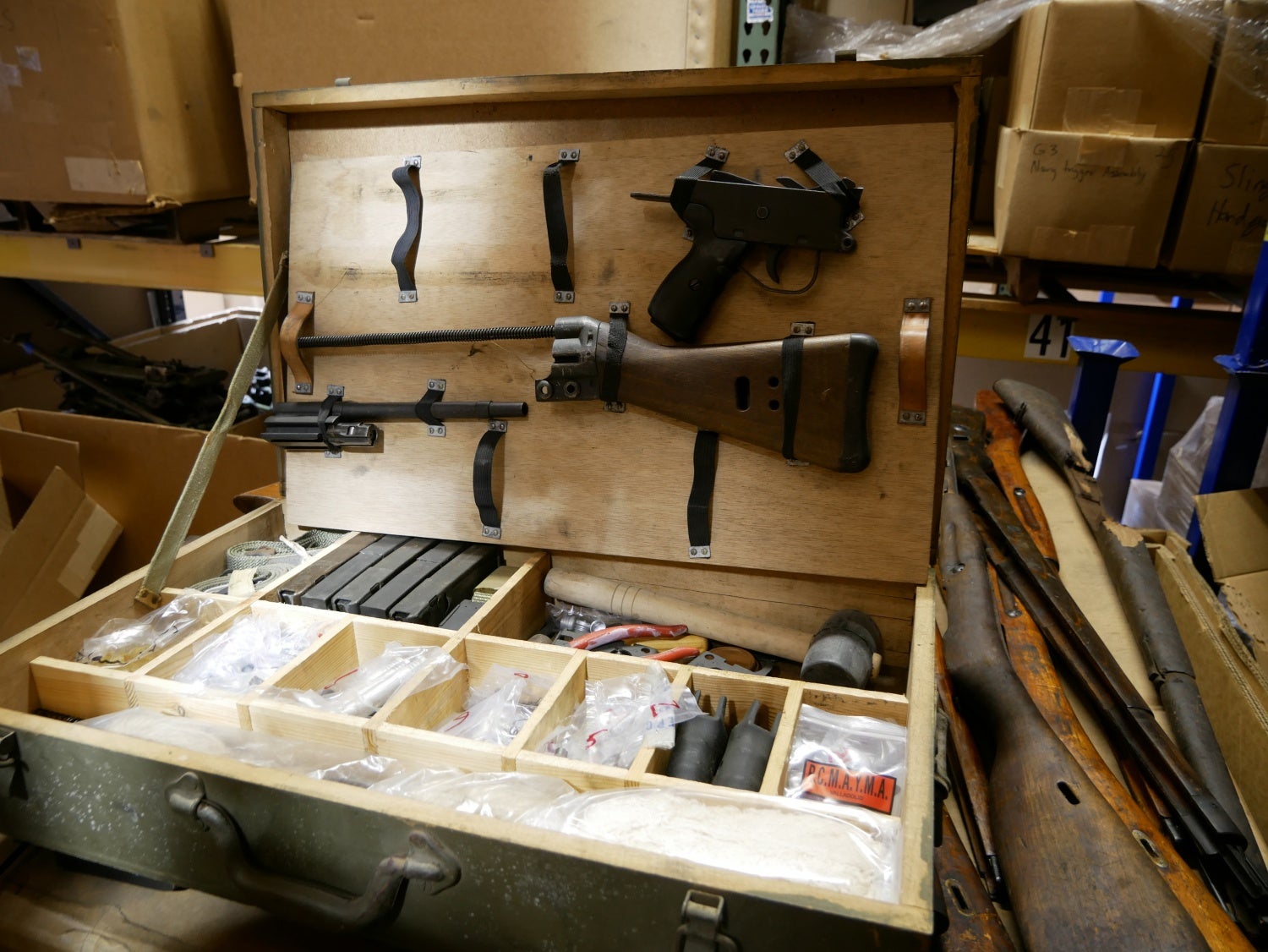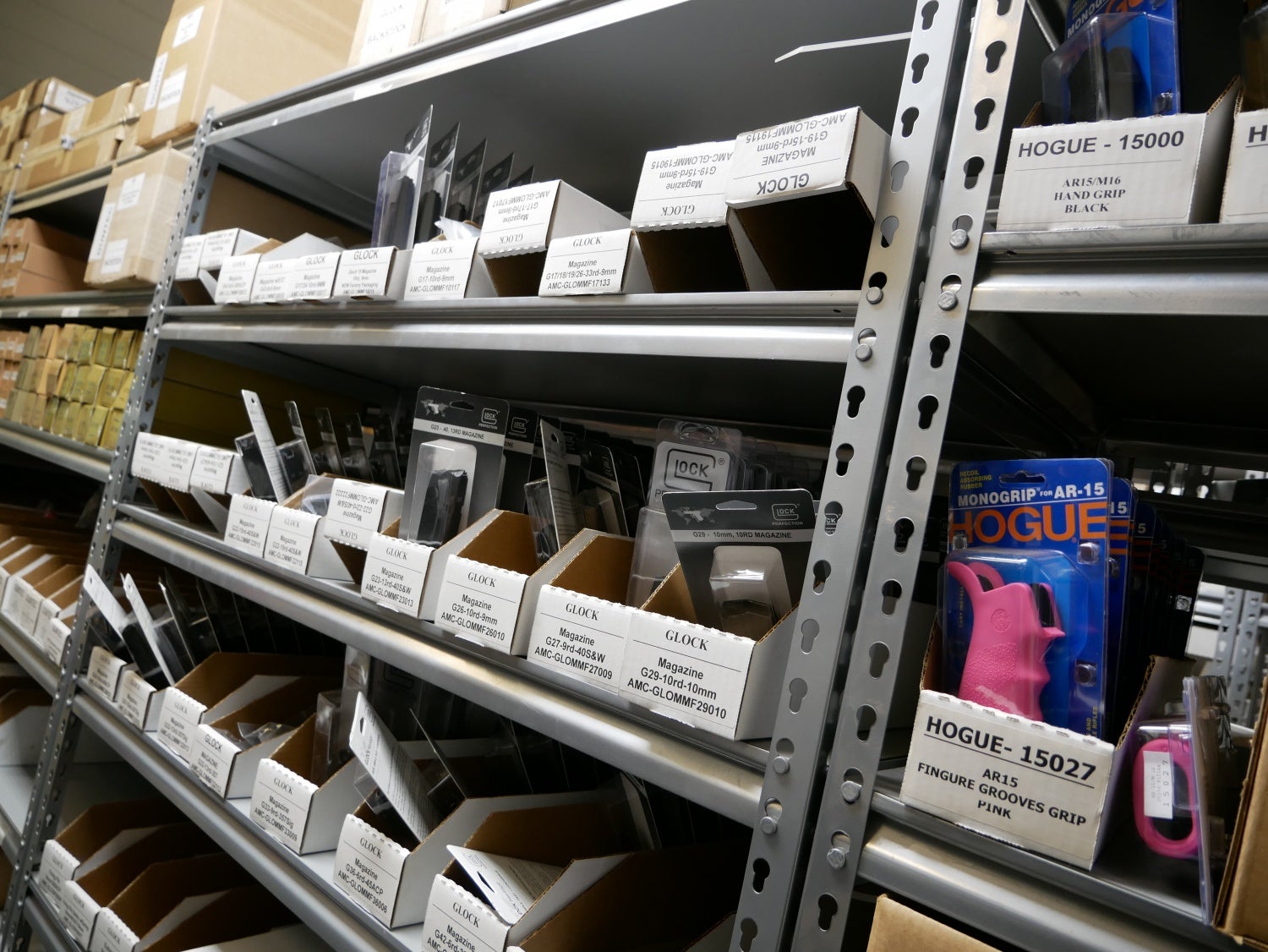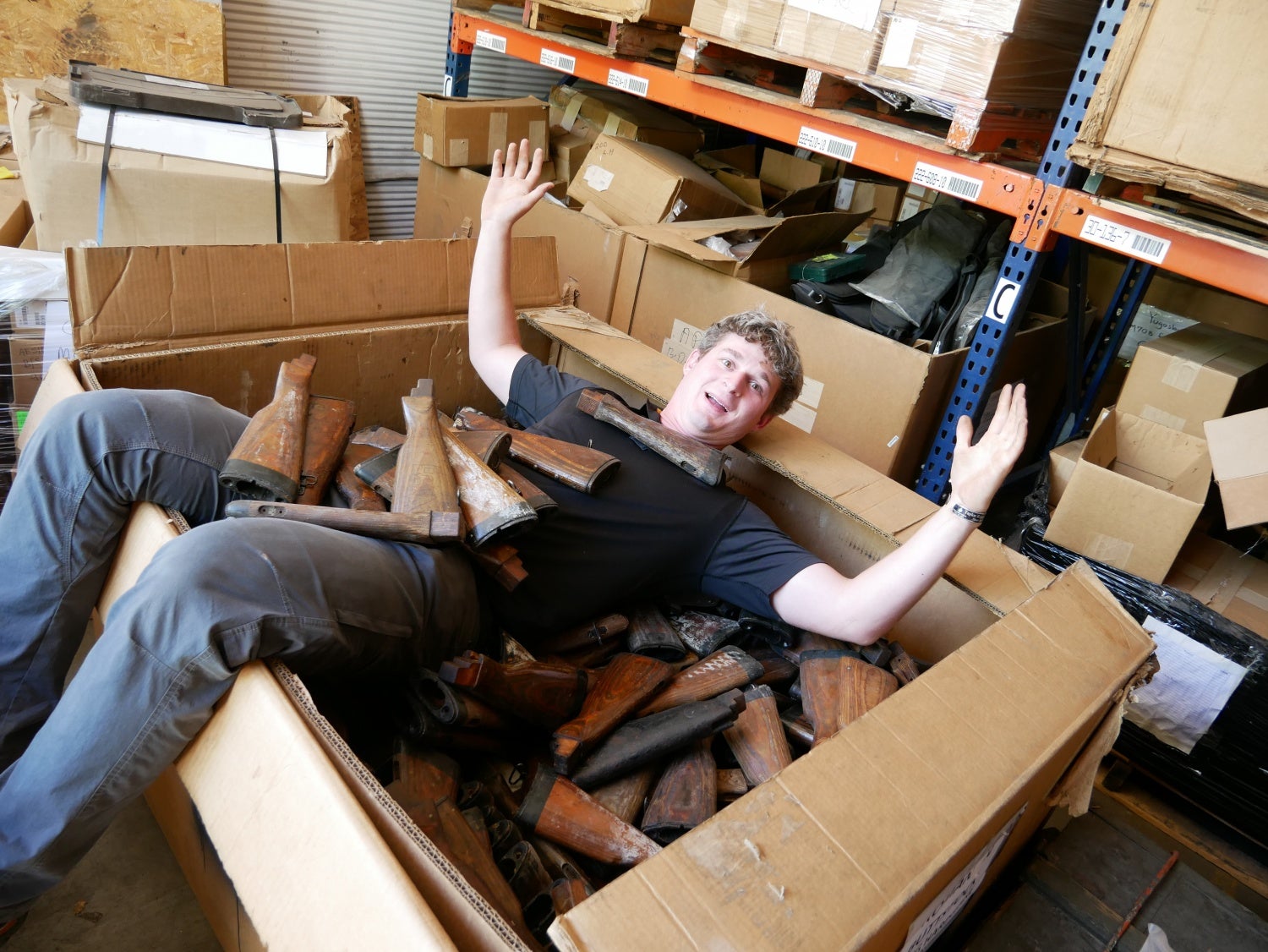We recently received an excellent opportunity to tour Apex Gun Parts, which you can read about on a recent TFB post here. During the tour we got a chance to sit down with Jeff Salvig and really ask him some in-depth questions about the surplus industry and how he got into it himself, eventually starting his company, Apex Arms. I think Jeff serves as an example to the rest of us, that he started out just as a very passionate collector and through hard work and determination, brought together one of the better companies in the industry when it comes to surplus inventories.
TFB- Could you tell us some of your background and how you got into the surplus industry?
Jeff- Well, I was a gun collector and I really liked military surplus. The first rifle I ever bought was a Lee Enfield. The first semiautomatic was a Maadi AK. I’ve always liked military firearms, it became my passion. I’d go to sleep reading Shotgun News, and reading books about historical firearms. I wanted to get an FFL but I didn’t see an opportunity in my mid-twenties.
TFB- So up until you had your job at Century you never had any formal firearms industry experience?
Jeff- No, not at all. I had a really good foundation of knowledge about firearms and what they were worth. I was convinced I wanted to get an FFL and be able to do business at gun shows. Initially, I got a job at Century Arms as a part time gig, really only lasting two months. That turned into four years while I was in Vermont with my family consisting of a wife and a young child. I ended up really wanting to continue work there, thinking “We need to stay here”. We were just there for the winter. At the time, the warehouse was huge, 100,000 square feet. Guns came in one door on pallets and left through another door.
TFB- What were your takeaways at Century?
Jeff- Well I started in the shipping department as an entry point. I supervised their bonded warehouse, so I dealt with Customs and worked the shipments as they arrived. I learned how things were de-milled, what the requirements were, what the cutting diagrams were, the variances, etc… That gave me a Customs background on the industry but then I started traveling overseas for Century. The first trip I did was right after 9/11, into Turkey. They already had the deals set up, so I wasn’t negotiating anything, just loading up Stens and Turkish Mausers to be sent back to the United States.
TFB- The guns are live, coming into the U.S. and here is where the cutting occurs?
Jeff- Yes…
TFB- Noooo! The cutting happens here?
Jeff- Unfortunately, but really it is much better because we get to cut them to specifications that allow the building of parts kits and such, we’ve got control over here. So if we need a variance to cut something a little differently, that puts us in that position as opposed to it happening overseas. Certainly, an advantageous position to be in.
TFB- How did the transition from Century to Apex happen?
Jeff- I knew I wanted to live in Colorado. Vermont was not where I wanted to spend the rest of my career. But I liked the industry. I had intended to be a firearms importer, but in order to do that, I needed a location. I had just left, so I had some money from selling my house. So I figured why not just buy parts until I could get an FFL and import license. I could just buy parts and sell them on Ebay. The revenue from that could support an FFL in the future. Over time I gradually became successful just selling parts. So I figured if I could just keep buying parts, there’d be no reason to work the FFL portion. Century had imported 100,000 Romanian “G” kits and as fast as I could sell those, I could get more. The goal isn’t to make as much money on each unit, but to buy as many as possible.
TFB- What are some of the intricacies of dealing in surplus because it is a very different market than new parts being sold?
Jeff- Yes, it is a very different market. It is being able to see value and opportunity. When something is cheap, it is cheap because of one or two reasons. There isn’t a lot of demand for it and there isn’t a lot of it. As an example, who wants G3 magazines when they are so cheap and there are 800,000 G3 magazines available. Thus, buying G3 magazines wouldn’t look like a good deal. Just like when Romanian kits were cheap, people knew they were a good deal but now that same kit would be 400, 500 dollars. You didn’t have to wait ten years for that price increase to happen, instead just waiting three years to gain that value. So when you see the right opportunity, buying that opportunity is what makes the difference. Because those opportunities don’t last. Things change and suddenly pallets of what you bought for cheap are now worth much more. That is the position you want to be in. It is hard to buy the deal when it is there, and make good money at that time.
TFB- How do you figure out what to buy then?
Jeff- For me, I use myself as the gauge. Do I want it? Does it excite me? Or does it appear to not be as interesting as I thought it would be? I’ve made mistakes as well along the way. We have Czech 26 kits as an example. There were like 16,000 available at the time, we bought 3500, and we made a commitment for another 3500 so we took 7000. What we bought them for, they just weren’t selling well and that was during the Sandy Hook craze. I think we sold 50 of them, which would normally be okay, but during that period you could have sold anything. So the fact that we only sold 50 meant that when the market became more rational, they weren’t going to sell and now we have the problem that we have entire pallets of them. You always remember the ones that don’t do well, because every time I go back there I see them. The good sellers you never see because they are gone so quickly, you forget you even had them in stock. In the end, there really isn’t a set formula, it is much more going off of instinct. I also represent a certain amount of my customer base. It’s not a perfect representation but if I’m enthusiastic then other gun owners probably will be as well.
Josh (Head of Marketing)- That is the great thing about being in this company because the employees are just as passionate about surplus as the customers are. Employees will recommend stuff because they’ll be buying it just as well.
TFB- How have events such as Sandy Hook, Obama’s election, affected the business?
Jeff- Obviously the panic that Obama started, kicked off a number of spikes in sales. But for me, the real question is not was that just a bubble, but what is reality? You can compare it to the housing market for example. There was this irrational exuberance that people were buying houses based on assumptions that the future is going to look like the past. Therefore it created a bubble. But once that popped, prices went to an irrational low. Those low prices aren’t going to last either though. So what is reality? Right now all of my good sense says that this is the time to buy, this is the time to make a move, but we’re not seeing it in surplus. The prices are continuing to go up because I believe of the demand for surplus military product in Syria. Groups in Syria are illegally importing or otherwise buying all the material that would have been coming into the United States in kits. It is taking away from our supply. We’d have to pay much more than normal just to get the regular supply we were getting before.
Josh- It is akin to balancing the world market, and then bringing in the U.S. market. Even with ARs and U.S. made stuff, the prices are so low here but much more overseas. So how do we buy low outside the U.S. and then bring it in here.
Jeff- U.S. commercial production is dictated by the U.S. commercial market demand. The surplus market is not dictated by the U.S. commercial market. It is just one venue. Similar to how when the U.S. market will buy a Mosin Nagant, and they can import them while no one else in the world wants them. Thus you can get a Nagant for a really good price. Also, the suppliers that are selling to the U.S., the brokers, they now know what the U.S. commercial market will pay for stuff. The good deals just aren’t out there right now. I’d like to be in a position where I can buy as much as I can to be in that position.
TFB- What would you say constitutes your customer base?
Jeff- Largely it is collectors and home builders. A new surplus owner who puts together an old rifle, he wants some magazines, a sling, etc… Over time we’ve really built that side up. I started out as a collector and we really owe a lot to collectors for the initial success that we had. They are still our base, but we’ve been able to transition to a fair portion of the rest of the shooting market. I want every one of them to be a potential customer, not just the collector. We do a fair amount with manufacturers as well. That’s not the front side of the business that you would see on our website.
TFB- How would you say the popular collector market has changed?
Jeff- I’ve had a lot of discussions about this sort of thing and I want to frame it correctly. In the early 2000s, if you wanted an AK, you could buy a Romanian SAR, you could buy an Egyptian Maadi, there were your Hungarian or Bulgarian options. But it was just an AK. It wasn’t like this is a Romanian AK74. No one called it by its designation. Today there are numerous AK models you can get when back then you were very limited. Right around 2000, when Americans started going overseas for OIF/OEF, the increase of video games. You had these high school age kids playing all these games, picking up on all these cool new guns. You’re creating an awareness that the AK wasn’t just an AK, you didn’t just have a Hungarian AK, you had an AMD65, an AMD63, there are a lot of different models that people weren’t aware of. That awareness happened with kits because the commercial manufacturers were just building AKs. It created a collectors market. You had people exposed to it overseas in person, and people exposed to it in video games as well. It was an upward movement and I don’t see that anymore. But that doesn’t mean that there is a downward movement either. With the higher prices, that is going to have downward pressure. Similar with everything, comic books, stamps, etc… When it gets to such a high price, you can only buy so many. I would really like to see a return of lower prices.
TFB- We noticed that you have a number of new products on the shelves, Glock magazines, etc…
Jeff- We have the new stuff because we need to sustain ourselves while waiting for the next big opportunity when it comes to surplus deals. That is like running a whole separate company. Because in surplus we try to buy as much as possible when the opportunity arises. With new product, there is no reason to buy 500 Glock NiB firing pins for example. You just need to buy enough to meet your needs for 30 days. But in order to do that you have to have inventory management. Every three weeks we’ll restock, and in order to do that you have to have some level of automation systems in place. In surplus when it is gone, it’s just gone! A one shot deal. We don’t make good money on new product but you can keep it moving. You don’t have depth of inventory, you have breath. Whereas with surplus it is all about depth.
TFB- Say everything you have right now dries up. What is the next big move in surplus supply? Where is it going to come from, what is it going to be?
Jeff- The key on this is change. Change in supply but also change in politics. For example, Libya had all sorts of Second World War surplus during the revolution. We’d love to import it, but not from Libya. Maybe within 10-20 years if Libya can become develop trade relations, we could get our hands on it. Suddenly, that surplus would be available. In the 1980s, Eastern Europe wasn’t open but there were thousands of British rifles coming in. Nothing is static in politics. Cuba is completely forbidden, just like Syria, like North Korea. Maybe something happens in the far future and we could see North Korean parts kits for sale in the United States. Also keep in mind that everything that is made today, is going to be surplus in the next several decades.
 Your Privacy Choices
Your Privacy Choices

